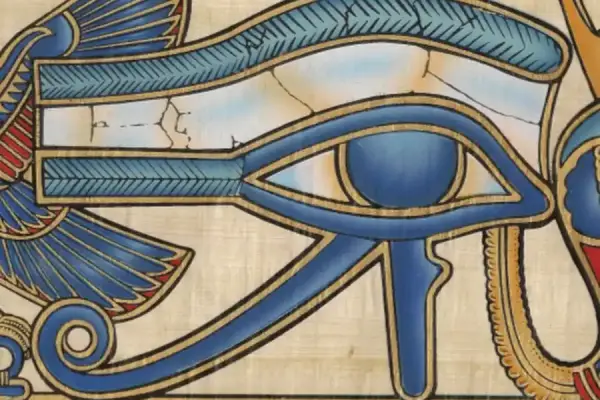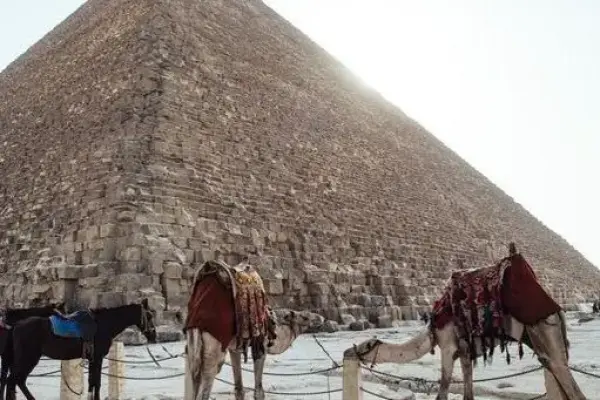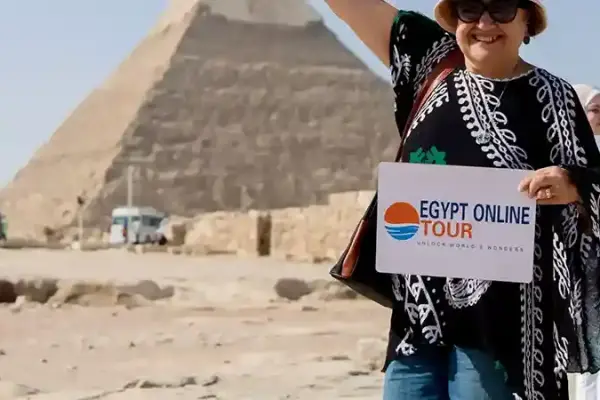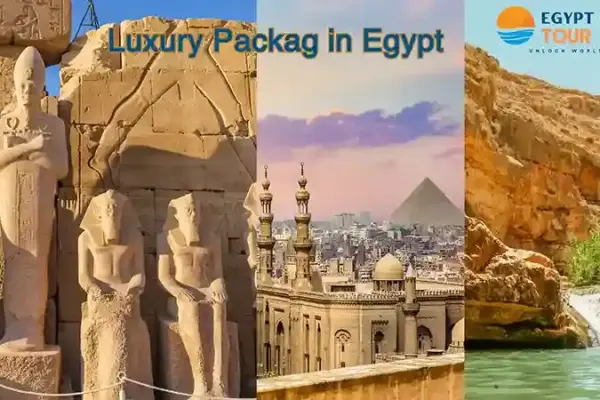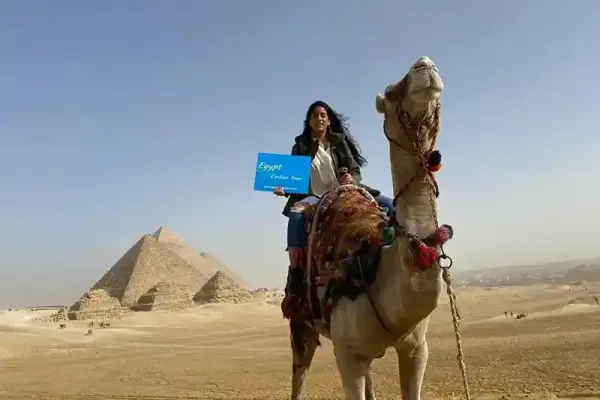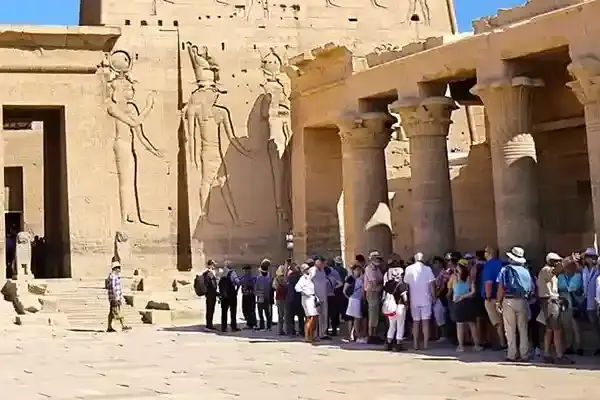Egyptian tattoos symbols and meanings stand out among the myriad tattoo styles and inspirations for their unique history, culture, and spiritual significance. Egyptian tattoo symbols are perfectly known for their rich mythology, sacred symbolism, and artistic brilliance, thus, making them a popular choice of body art. In this article, we explore Egyptian tattoos, their types, meanings, historical significance, and relevance.
Table of contents [Show]
- Types of Egyptian Symbol Tattoos
- Why Choose an Egyptian Tattoo?
- Choose Your Symbol Carefully
- Egyptian Tattoos Symbols and Meanings
- Ancient Egyptian Symbols and Their Meanings
- Popular Egyptian Tattoo Ideas and Their Meanings
- Top Egyptian Tattoo Questions
- Top Egyptian Tattoo Motifs
- What Is The Ancient Egyptian Symbol for Tattoos
- Conclusion
Types of Egyptian Symbol Tattoos
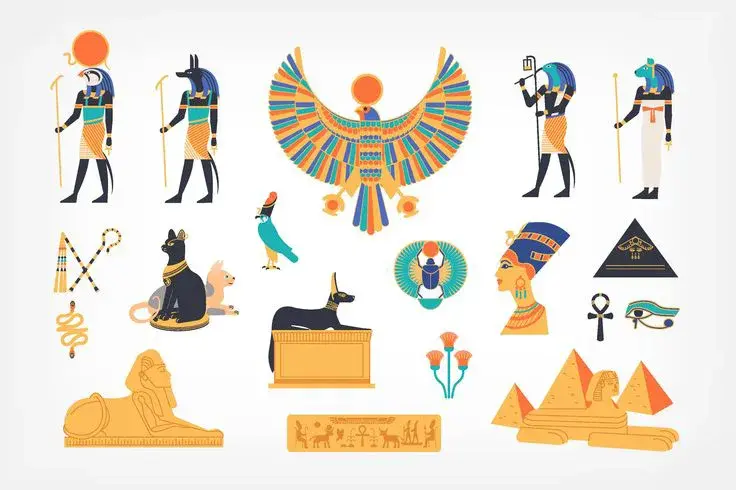
Egyptian tattoos symbols and meanings are very diverse, as are the symbols they represent, and so reflect the culture’s depth and complexity. Some of the most popular categories include:
1. Deities and Mythological Figures
You’ll commonly see Egyptian tattoos symbols and meanings featuring gods and goddesses such as Anubis, Bastet, and Horus represented on tattoos. Each deity represents specific qualities:
Anubis
Anubis is the jackal-headed god of the underworld and symbolizes protection in the afterlife.
Bastet
Bastet is the feline goddess of home and fertility, symbolizing grace and protection.
Horus
The falcon-headed god Horus is the god of kingship and divine guidance.
2. Sacred Animals
Cats, scarabs, and hawks were special animals in Egyptian religion on account of their spiritual and symbolic importance.
Bastet was sacred to cats and represented protection and mysticism.
The scarab was a symbol of rebirth and believed to ward off evil.
3. Cosmic and Natural Elements
Egyptian tattoo designs, rich in symbolism, often draw inspiration from cosmic elements, focusing on the sun, moon, and stars to convey deep meanings.
Sun disk (Aten) is the symbol of creation and life.
The Lotus flower means purity, enlightenment, and rebirth.
4. Sacred and Hieroglyphs scripts
The hieroglyphic language also includes meaningful tattoo options; for example the ankh (eternal life) or Shen ring (eternity).
5. Pharaohs and Royals
Leadership, charisma, and beauty are represented in Pharaohs' or queens’ tattoos such as Cleopatra.
– Journey through the heart of ancient Egypt in 5 days! From the majestic Pyramids and the Sphinx in Cairo to Luxor’s famed Valley of the Kings and Karnak Temple, this 5 Days Cairo to Luxor Tour Packages offers a rich exploration of Egypt's most iconic sites.
Maybe like: important holidays in Egypt
Why Choose an Egyptian Tattoo?
Egyptian tattoos symbols and meanings aren’t just decorations; they’re a deeply symbolic choice about something the wearer connects to one of the most fascinating ancient civilizations.
1. Cultural Significance
Innovation, spirituality, and mystery are synonymous with ancient Egypt. By selecting an Egyptian tattoo, you can give yourself the embodiment of an ever-enduring heritage.
2. Personal Symbolism
If you’re looking for deeper meanings in your tattoo, these tattoos are perfect. For instance, the ankh symbolizes eternal life, and the Eye of Horus symbolizes protection and insight.
3. Symbolic Storytelling
Egyptian tattoos symbols and meanings are a means of expressing personal values or beliefs. These symbols reflect the wearer’s personal journey, representing themes of resilience, transformation, or love.
4. Aesthetic Beauty
Egyptian tattoos are famous for being created with artistic elegance. Their visual appearance is contributed to by the intricate design, geometric precision, and cultural depth.
5. Timeless Appeal
Although Egyptian tattoos are as old as time, they remain relevant in modern times. They are classic, yet modern, and are a great option for any tattoo design.
Take a look at: How many days do you need in Cairo
Choose Your Symbol Carefully
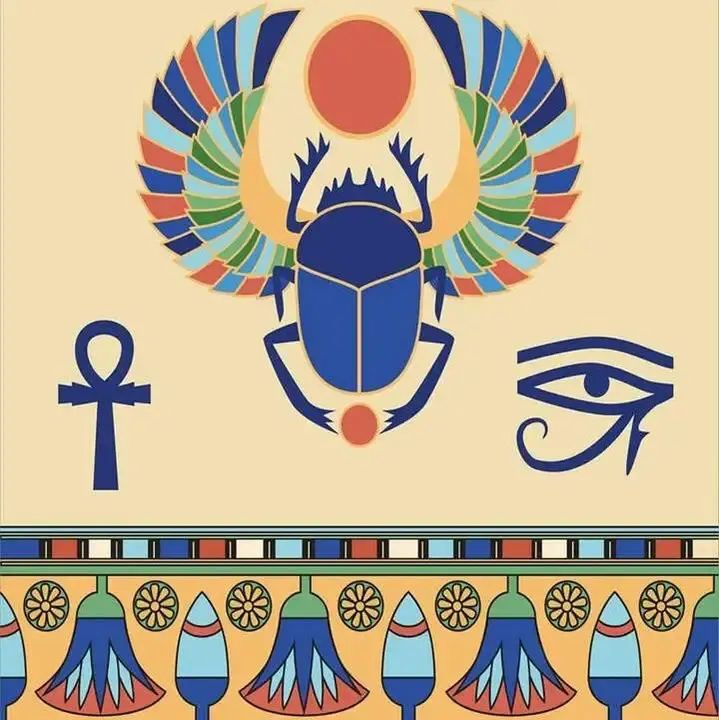
By choosing your symbol carefully, your tattoo is more than a beautiful work of art; it is also a particularly meaningful extension of yourself, and since each symbol has a special meaning, so careful thought must be given.
1. Learn the Symbol’s Background and What it Means
Find out the cultural and spiritual meaning of the symbol you are thinking of. For instance, stability meaning is associated with the Djed pillar related to Osiris, the god of the afterlife.
2. Align With Personal Values
Ask yourself: How does the symbol resonate personally with you? For example, If you’re looking for a new beginning the scarab beetle can be a symbol of this transformation.
3. Consult Experts
If you work with a tattoo artist familiar with Egyptian tattoos symbols and meanings you’re guaranteed that the design will be in its historical and cultural context.
4. Consider Placement and Style
Your tattoo’s size and location can affect how it looks and how it’s interpreted. An example of this is that a wrist tattoo can symbolize openness and visibility, and a back tattoo could symbolize introspection or personal strength.
— This 8 days Cairo, Luxor, and Aswan tour takes you on a mesmerizing journey through Egypt’s treasures to stand in awe before the Great Pyramids, explore Luxor’s ancient temples, and sail the Nile to Aswan. Book it Now!
Egyptian Tattoos Symbols and Meanings
The secret of Egyptian tattoos symbols and meanings is about how they present very deep ideas in a very simple yet powerful imagery.
1. The Ankh
One of the most popular Egyptian symbols is the ankh - also referred to as “the key of life”, and it means eternal life and divine protection.
2. The Eye of Horus
This symbol is known as “Wadjet,” and was believed by the ancient Egyptians to provide protection, healing, and wisdom. This is also a symbol of vigilance and clarity and to prevent negative energy.
3. The Scarab Beetle
In Egyptian culture, the scarab beetle is a symbol of renewal, as well as rebirth. People used it in amulets to prevent harm.
4. The Lotus Flower
The Lotus flower is a pure and enlightening symbol as it grows again and again every day from muddy waters, representing resilience and transformation.
5. Hieroglyphic Combinations
There are many people who choose unique hieroglyph combinations, such as their name or a meaningful phrase in which they make a personalized link to Egyptian heritage.
– Discover the magic of Egypt on a 10-day round Trip Nile Cruise and Pyramids. Visit the iconic Pyramids of Giza, explore Luxor’s treasures, and cruise along the Nile to Aswan. This trip offers an unparalleled journey through Egypt’s ancient wonders, complete with luxury accommodations, seamless travel, and expert guidance for an unforgettable experience.
Ancient Egyptian Symbols and Their Meanings
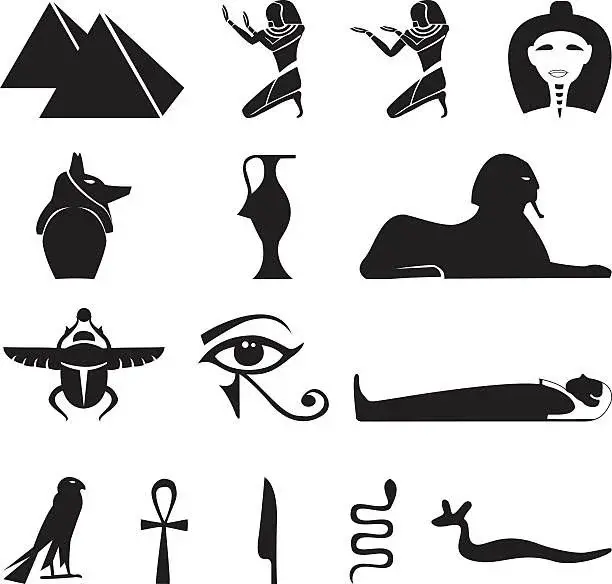
Egyptian tattoos symbols and meanings were a deeply embedded part of the religious and cultural life of ancient Egyptians. Some key symbols and their meanings include:
1. Ma’at’s Feather
Ma'at's feather represents truth, balance, and justice and is vital in the weighing of the heart in the afterlife ceremony. If the feather outweighed the heart, Ammut devoured it and the soul was condemned to darkness. But if the scales were even then the deceased passed the test and was welcomed into the afterlife in peace and harmony by Osiris.
2. The Djed Pillar
The Djed was associated with Osiris, meaning stability and strength, and it was often present in rituals concerning life after death.
3. The Shen Ring
This circular symbol was used most often in protective amulets and represented eternity and completeness.
4. The Uraeus (Cobra)
The cobra was associated with royalty, and divine authority, and was often depicted on pharaohs' crowns.
5. The Ka and Ba
In Egyptian belief, these hieroglyphs represent aspects of the soul like the spiritual essence and individuality.
– Your dream Egyptian vacation starts here! Egypt Online Tour offers the best tours to the Pyramids, Nile cruises, and ancient temples. Book your unforgettable adventure today!
Read about: What Is There to Do in Luxor
Popular Egyptian Tattoo Ideas and Their Meanings

For those considering Egyptian tattoos symbols and meanings, here are popular designs and their associated meanings:
1. Ankh Tattoos
The ankh is a symbol of eternal life, as well as divine protection. It is simple enough to design for everything from minimalist to elaborate tattoos.
2. Pharaoh Tattoos
Ancient Egyptian rulers such as Tutankhamun or Cleopatra appear incarnated in pharaoh designs displaying confirmed power, legacy, and connection to divine power.
3. Pyramid and Sphinx
These symbols are mystic and timeless and also represent the grandeur of Egyptian civilization.
4. Eye of Ra Tattoos
The eye of Ra is often confused with the Eye of Horus and it represents the sun, power, and protection, making it a bold choice for those looking for strength and resilience.
5. Horus Falcon
This tattoo depicts the god Horus as a falcon and is used to represent divine kingship and protection.
6. Papyrus and Lotus Motifs
Papyrus and Lotus designs are often combined, depicting creation and rebirth.
– Experience Egypt’s greatest treasures with our Egypt Classic Tours. Visit Cairo’s iconic Pyramids, Luxor’s Valley of the Kings, and more, with guided tours for an unforgettable journey.
Maybe like: Pyramids were most popular during which of the following periods
Top Egyptian Tattoo Questions
Q1. Are Egyptian tattoos religious?
There are spiritual undertones with many Egyptian tattoos symbols and meanings because the culture traditionally has a tight relationship with gods as well as the afterlife. But they’re also popular for their universal meanings - like protection and transformation.
Q2. What’s the most popular Egyptian symbol for tattoos?
The Eye of Horus is one of the most charismatic as well as versatile symbols encompassing protection, health, and wisdom.
Q3. Do Egyptian tattoos suit everyone?
Yes, Egyptian tattoos symbols and meanings are certainly timeless and apposite for everyone, regardless of background.
Q4. Are Egyptian tattoos gender-specific?
Egyptian tattoos are not strict to a specific gender. For example, the lotus or ankh, two popular symbols, are common amongst both genders because they are symbols with universal significance.
Q5. Do Egyptian tattoos have modern relevance?
Absolutely. Egyptian tattoos symbols and meanings haven't gone out of style - there's a cool blend of historical depth and present-day aesthetics.
Top Egyptian Tattoo Motifs
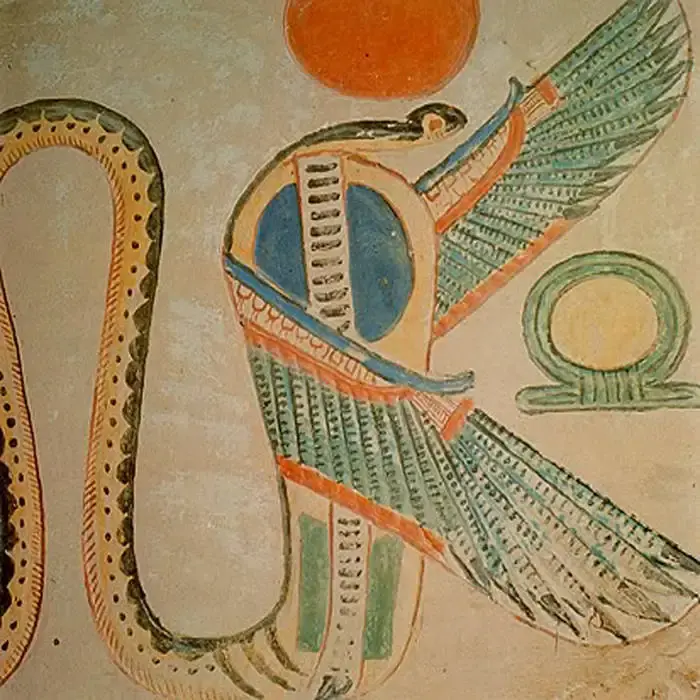
Many Egyptian tattoo motifs draw their inspiration from recurring themes of life, death, protection, and spirituality. Here are some of the most iconic ancient Egyptian motifs:
Solar Disk
The sun’s power or creation is represented by the solar disk. Sometimes, wings accompany it, representing protection, and divinity.
Scarab Beetles
Scarabs are a symbol of rebirth and the eternal cycle of life, and sometimes they are paired with hieroglyphic patterns for additional significance.
Ma’at’s Feather
Those who value balance and truth hold up this as a favorite motif. It usually appears as a stand-alone symbol or in intricate chest or back designs.
Serpents and Cobras
Serpents represent the divine and sovereignty, while a cobra tattoo shows the power and authority of the pharaoh.
Egyptian Deity Portraits
Typically tattoos of deities such as Isis or Horus contain elaborate details that indicate the wearer’s spiritual relationship with the grandeur of ancient Egypt.
What Is The Ancient Egyptian Symbol for Tattoos
There is no single ancient Egyptian symbol for tattoos. However, Egyptian tattoos symbols and meanings often feature motifs like the ankh or the Eye of Horus, which were believed to protect and guide individuals.
Tattooing was primarily the practice of women, and it was thought that tattooing had spiritual or protective purposes. Geometric patterns, sacred symbols, and images of gods like Bes related to fertility and protection were also found in that old time. Other motifs, such as the ankh or Eye of Horus, were perceived to protect and guide individuals.
The tattoos might have served religious devotion or societal role or may have been a sign of rites of passage. Some tattoos were thought to give protection from illness during childbirth, for example.
Today, Egyptian tattoos symbols and meanings inspire tattoo lovers by going back in time to find designs that remind them of history and spirituality and thus have the timeless value of Egyptian tattoos symbols and meanings.
– Explore Egypt’s ancient treasures with our Egypt Luxury Tours and enjoy private tours, luxury Nile cruises, and exceptional service at Egypt’s most iconic sites.
Conclusion
Egyptian tattoos are a beautiful display of history, culture, and personal meaning. These symbols are still inspiring and resonating with people across the world from the protective Eye of Horus to the ever eternal ankh. By learning Egyptian tattoos symbols and meanings, you can select tattoos that not only represent who you are but also associate yourself with the great legacy of one of the world's richest cultures in history.
Popular Categories
Popular Posts

Top Alexandria Beaches You Must Visit 2026
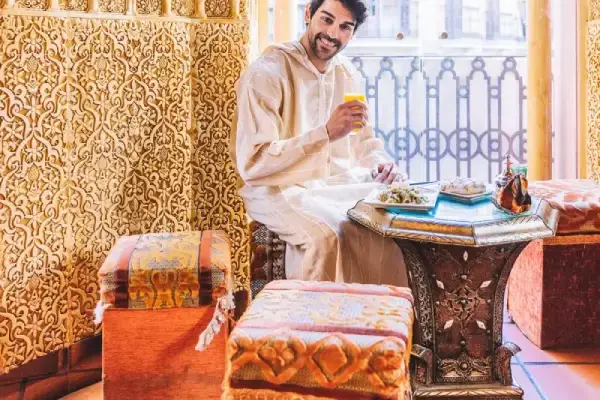
What are the important holidays in Egypt?

